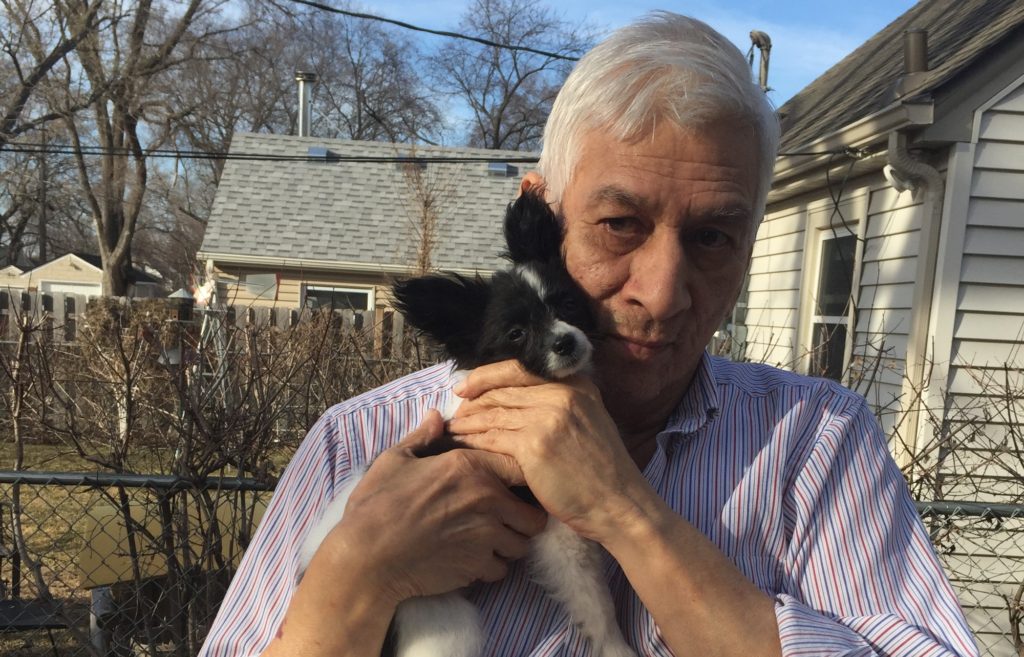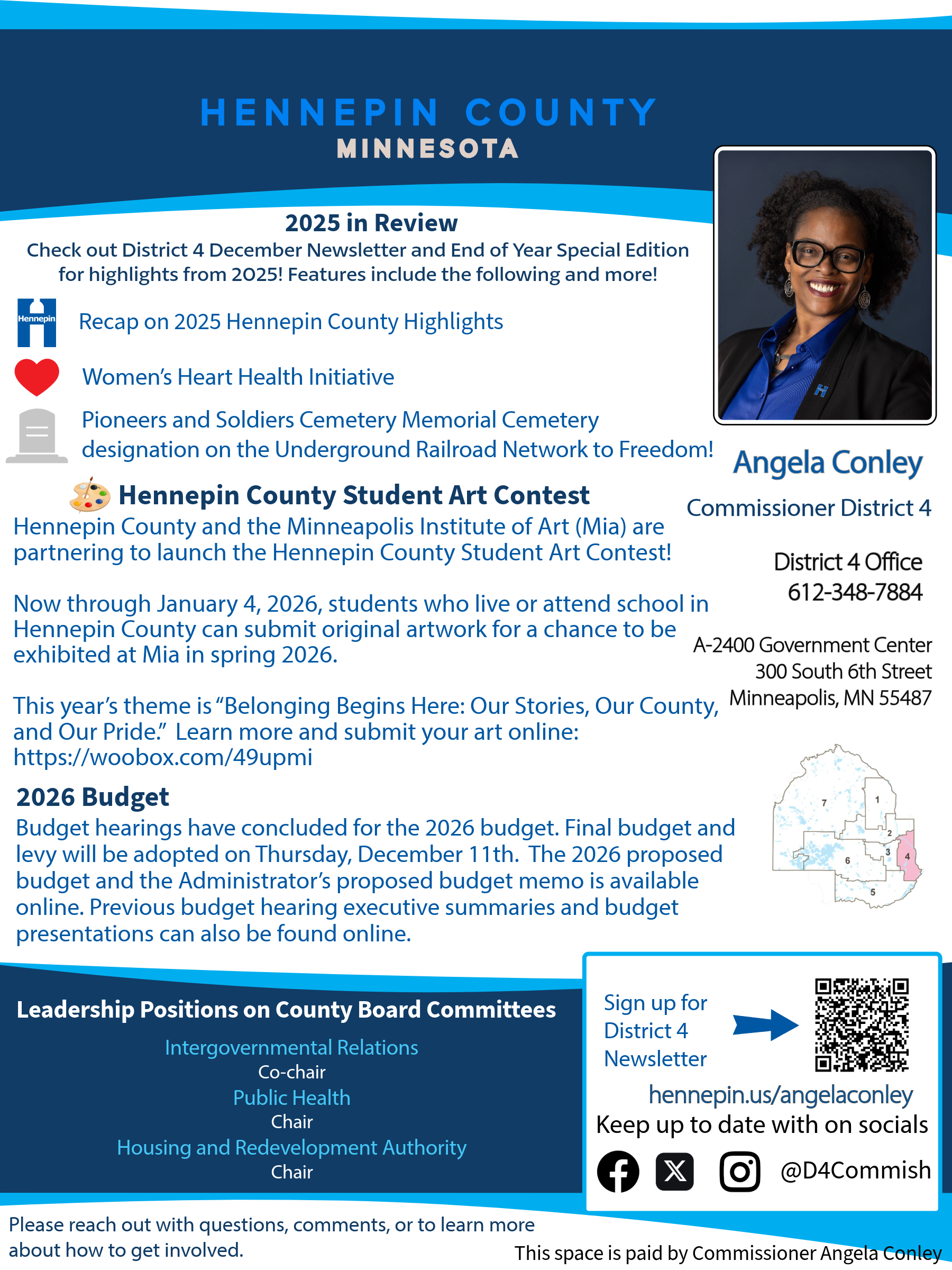
”My English name is Roger Buffalohead. My Ponca name is Insta dupa, which means Four Eyes. It refers to a very ancient Ponca dog. It had yellow markings above its eyes. At a distance it looked like it had four eyes. It was a very honorific name. In the Ponca clans you inherit a clan name. When you pass on your name goes back into the clan pool. The next born would get your name . We don”'t really know how old those names are but they go back many, many, many generations. Buffalohead is an English translation of Te Nugah pah, which means people at the head of the buffalo ceremony. Some lazy BIA clerk decided that that was too long of a name to put on a form. He shortened it to Buffalohead and that became our name and has remained our name in modern times.”
BY LAURA WATERMAN WITTSTOCK
Roger and Priscilla Buffalohead came to Minneapolis with their young son in 1970. A Department of American Indian Studies was being created and the talent seekers wanted the young and gifted man from the Ponca Tribe of Oklahoma to take the position of chair. It was a moment of pride for all of Indian Country and students came from several nations to study at the University of Minnesota.
Roger and Priscilla met at the University of Wisconsin where they were both graduate students and Roger and Priscilla”'s brother were taking a class from Dr. David A. Baerreis, a professor known for his environmentally oriented research of human behavior. Priscilla”'s brother introduced them and they were astonished to discover that they were next-door neighbors! They married in 1965 and the Wisconsin Alumnae noted the wedding. Their son Eric was born later that year. His English name came from his mother and his Ponca name came from his great grandfather. Both Priscilla and Roger were graduate students, working on their PhDs, and taking turns caring for baby Eric. Roger fashioned a cardboard box into a rocker so he could place the baby in the box and rock him while he studied.
The University of Cincinnati recruited both of them so with unfinished academic study, they moved to Ohio. Then UCLA in California wanted Roger for a one-year special chair and from there it was on to Minnesota. Daughter Julie was born in Minneapolis: named again by Mom in English and for a great aunt of the Ponca Tribe.
Roger was never far from his family in Oklahoma, although. He had been at home with his family until he graduated from high school and went on to Oklahoma State University in Stillwater, a distance of only 40 miles by car, it was also seemingly a world apart. Like many young men of the times, he worked to earn his board and to pay for what scholarships would not cover. Then he got a scholarship to the University of Wisconsin and he was truly far away from his family. They never stopped asking him to come home. The pursuit of higher education was not as important as the bonds of family, in their eyes, although they all felt great pride in their learned son.
For the rest of his professional career, when he could not take his family and visit his home in Oklahoma, he carried the stories of his youth into lessons and conversations with his students and friends. His Ponca identity became an asset and example of how to navigate the foreign worlds of academe or just life far away from one”'s home reservation.
After six years at the University of Minnesota, Roger took a one-year assignment at Washington State in Pullman, Washington and was then recruited to Duluth, back at the U of M. From there he went to Santa Fe, New Mexico to the Institute of American Indian Arts to build a new art school from its skeletal beginnings. Then he came back to Minnesota and took a big chance by taking on a new program that promised to help younger Native students succeed in school by learning the tools of communication and having success with the very earliest computers available in 1983. Roger”'s magic touch with students worked with high school students as well. They wanted to learn but so much was getting in the way. Roger found ways to move some of those obstacles and to be there as a promise that there was someone to lean on.
From MIGIZI and high school students, he held a few short-term posts before moving to the two-year college the Minneapolis Community Technical College.
Everywhere Roger went, he plunged himself into the lives of his students. During his time at the University of Minnesota, he would join students in the local bars to argue points of history and prod one or more individual students to press harder, always moving forward. There were graduate students who came back to him for advice and encouragement, which they got, and he and Priscilla would cook endless meals for these hungry and often homesick students. It must be said that Roger, along with Priscilla, were unusual academics, who truly enjoyed the company of their Native students, giving them the best lesson of all: we are more than schools; we are a great people.
Here is just one question Roger posed to his students:
There are several things we might consider as we look for guidelines for future policy. Tribes cannot have political self-determination without economic self-determination, and the federal government must realize that for most tribes the idea of self-sufficiency has not been achieved and will not be achieved without massive support from the federal government. Another problem that exists today is the so-called government-to-government relationship between the United States and all the different tribes. How is that to be carried out? How is the government to accept advice and recommendation from all of these tribes? Should we not be looking at some kind of forums, some kind of congresses, some way in which tribal views or advice that is bona fide and comes from those tribal communities, that reflects the needs of Indian people within those communities, can reach that vast bureaucracy in Washington, D.C.?
There was no better way of helping his students to think than to give them a real dilemma to work on as they made the discovery that the passage to understanding Indian history was never certain.
Roger and Priscilla”'s own children, Eric and Julie went on to their own careers. Eric is an Associate Professor and Chair of American Indian Studies at Augsburg College in Minneapolis and Julie”'s national reputation as an artist continues to grow.
The grandchildren include Alexandra, Cassandra, Ira, Ely, and Madeline. From time to time, when awards were bestowed, Roger was always embarrassed by praise, but he was absolutely proud of his grandchildren. Whatever might come to him was less important than holding his grandchildren close to him and giving them all the love he could. As time went by, both Priscilla and Roger would face major health issues and eventually, Roger”'s death came suddenly, but it was at the end of many episodes that threatened his health. Even so, he continued to read, study parts of Indian history, and argue points with Priscilla or visiting friends. There are thousands of former students out there who mourn the loss of their teacher. Because that is what he was at his core: a teacher to those who would learn.
Laura Waterman Wittstock is a writer and education consultant. She is currently working on a book on the migration of Minnesota Native people from their home territories to the cities in the state. She is the author of “Inininatig”'s Gift of Sugar: Traditional Sugarmaking,” and “We Are Still Here: A Photographic History of the American Indian Movement.”
“Laura Waterman Wittstock is a writer and education consultant. She is currently working on a book on the migration of Minnesota Native people from their home territories to the cities in the state. She is the author of “Inininatig”'s Gift of Sugar: Traditional Sugarmaking,” and “We Are Still Here: A Photographic History of the American Indian Movement.”
“









